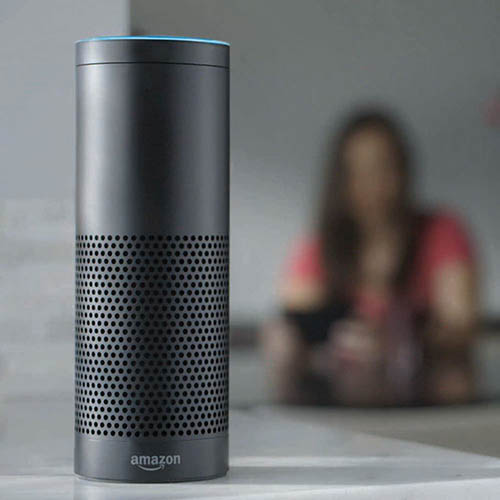Products such as the Amazon Echo (pictured) and Google Home are redefining the role that smart tech will play in our lives and along with VR are hotly tipped as the next two ‘big things’ in our industry, claims Gekko managing director Daniel Todaro
The term AI is being bandied about in all forms of media, but do many people actually understand how Artificial Intelligence is now becoming part of the consumer-electronics landscape in some of the most everyday products – almost making smart technology seem old hat by comparison.
The reality is that in order for AI to function, you need smart devices to metaphorically ‘join the dots’ to create an AI solution that works for you in your environment.
Probably the most recognised mainstream AI product to come to market is the Amazon Echo, which is expected to sell three million units in 2016, with forecasts of 10m for 2017. You’ll know the product – it’s that black cylinder with a blue pulsating light on top, promoted through those awful adverts where some chap asks Alexa to add tennis balls and bananas to his shopping list.
Effectively
In essence, Amazon Echo and its sibling Dot – which has no speaker but effectively does the same thing – are intended to be your assistant, connecting all your smart devices.
Combined with other IoT products, Echo enables you to voice-control your heating, lights, online orders, music streaming and on-demand services like Uber.
It’s impressive stuff, but you’ll always have to ask for Alexa, prefacing all requests with her name, which may make you feel somewhat daft. After all, the only device I want to talk to is my phone, as part of a conversation with a human being. I’m sure I’ll adapt to AI over time. Generations younger than me and in the future will think this the norm – making AI a surefire success and as commonplace in the home as a TV or a tablet.
While Amazon’s product is reasonably priced, its users have fed back so far that 87 per cent are satisfied with the device. Eighty-five per cent use Echo to set alarms, 82 per cent to play music, and two-thirds ask for news updates. Overall, 39 per cent of Echo users plan to increase their usage as support grows for the platform, which will be intrinsically linked to bolstering Amazon’s revenues.

This remains unlikely, however, when you consider what’s coming next – Google Home. The future of AI in the home is way more than just a ‘smart speaker’, as the category is being tagged. This innovation outclasses all other mainstream AI devices when you consider its compatibility across all Google platforms, including YouTube, Google Maps and third-party streaming services such as Netflix and Open Table. Finally, it’s compatible across all OS devices, but complemented by all ‘Made by Google’ devices from Pixel to Chromecast.
Google Home changes the game by setting the state of play in the ‘smart speaker’ category, taking it to the next level and setting the benchmark many will struggle to follow.
AI is a mainstay, not a gimmick, which will intrinsically evolve with your devices, appliances, streaming platforms and all forms of entertainment. Alongside VR, it’s the next big thing estimated to become a $2 billion-plus category by 2020 that you can’t afford to ignore.
With an estimated $400 million being invested in 2016 on content development, the industry has established Virtual Reality as a credible platform over and above Sony’s PlayStation VR, which is estimated to sell 2.6 million units in 2016 alone.
What VR will potentially help is declining PC sales, as users transition to tablets and phablets. With an eight per cent decline in global PC sales, it’s unlikely that VR will fill the gap, however it will assist in particular within the PC gaming category.
Adoption
VR will, it’s believed, be a $50bn industry by 2021, with only half of that generated from gaming. So the rest is to play for, with smartphone adoption accounting for seven per cent of the market, but interestingly achieving a higher volume due to the low cost of VR equipment. Those familiar with VR will know Cardboard, which has been around, in tech years, for ages. But now we have Google Daydream, a device that yet again changes the market with innovation, design and distribution only challenged by the Samsung Gear (Oculus).
Whichever way you view it, both VR and AI are here to stay and the new kids on the block are stealing a march. There was a time that many thought these innovations would come out of Infinite Loop, instead it’s evolving from Mountain View and Terry Avenue. For the times they are a-changin’.


